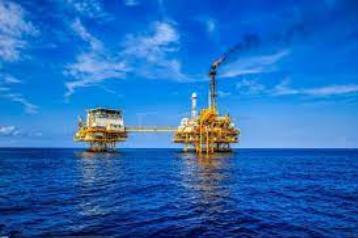Detailed Information on Offshore Drilling Units
Offshore drilling units are specialized structures designed to explore, drill, and extract hydrocarbons from beneath the seabed. They vary in design and functionality to suit different water depths, environmental conditions, and operational requirements. Below is an elaborate discussion on jack-up rigs, semi-submersible rigs, drillships, and tender-assisted drilling units.
1. Jack-Up Rigs
Jack-up rigs are mobile offshore drilling units (MODUs) used primarily in shallow waters. They are designed to “jack” their legs down to the seabed to provide a stable drilling platform above the water surface.
Key Features:
- Structure: A triangular or rectangular platform supported by multiple steel legs (usually three or more) that rest on the seabed.
- Mobility: The hull of the rig floats during transit and is towed to the drilling location. Once positioned, the legs are lowered to the seabed.
- Water Depth Suitability: Typically used in waters up to 150 meters (500 feet), though advanced models can operate in depths up to 200 meters (650 feet).
Applications:
- Exploration and development drilling in shallow waters.
- Temporary production or accommodation facilities in offshore oilfields.
Advantages:
- High stability in shallow waters.
- Cost-effective compared to floating rigs for shallow-water projects.
- Easily transportable to different locations.
Challenges:
- Limited to shallow water depths.
- Vulnerable to harsh weather and wave conditions in deeper areas.
2. Semi-Submersible Rigs
Semi-submersible rigs are versatile floating drilling platforms designed to operate in deep and ultra-deep waters.
Key Features:
- Structure: The platform is supported by large pontoons or columns that are partially submerged below the waterline, providing buoyancy and stability.
- Anchoring: They are anchored to the seabed using mooring lines or dynamic positioning systems.
- Water Depth Suitability: Can operate in depths ranging from 200 meters (650 feet) to over 3,000 meters (10,000 feet).
Applications:
- Exploratory drilling in deepwater and ultra-deepwater locations.
- Suitable for harsh environments, including strong winds and waves.
Advantages:
- Excellent stability due to the submerged pontoons.
- Flexible deployment in deepwater and remote areas.
- Capable of withstanding extreme environmental conditions.
Challenges:
- High construction and operational costs.
- Requires extensive logistical support for maintenance and operation.
3. Drillships
Drillships are maritime vessels equipped with advanced drilling systems, designed to operate in deep and ultra-deep waters.
Key Features:
- Structure: A ship-shaped hull fitted with a derrick and other drilling equipment.
- Dynamic Positioning: Equipped with thrusters and GPS systems for precise positioning without anchoring.
- Water Depth Suitability: Capable of operating in depths exceeding 3,000 meters (10,000 feet).
Applications:
- Exploratory and appraisal drilling in deepwater oil and gas fields.
- Often used in ultra-deepwater environments and remote locations.
Advantages:
- Highly mobile and capable of long-distance travel between drilling sites.
- Able to accommodate a wide range of drilling and completion operations.
- Self-sufficient with onboard storage, living quarters, and power generation.
Challenges:
- Expensive to build and operate.
- Vulnerable to adverse weather conditions such as hurricanes and storms.
4. Tender-Assisted Drilling Units
Tender-assisted drilling (TAD) units are specialized rigs that work in conjunction with a separate tender vessel. The drilling equipment is located on a fixed or floating platform, while the tender vessel provides support services.
Key Features:
- Structure: The rig typically has a lightweight design with limited onboard facilities.
- Support Vessel: The tender vessel provides power, storage, and accommodations for crew and equipment.
- Water Depth Suitability: Best suited for shallow to medium depths (up to 1,000 meters or 3,300 feet).
Applications:
- Development drilling on fixed or floating platforms.
- Cost-effective drilling in fields with existing infrastructure.
Advantages:
- Reduced weight and cost of the rig itself.
- Flexibility to operate in various locations by deploying the tender vessel.
- Lower transportation and installation costs.
Challenges:
- Dependence on the tender vessel for support.
- Limited operational scope compared to standalone rigs.
Comparative Overview
| Feature | Jack-Up Rigs | Semi-Submersible Rigs | Drillships | Tender-Assisted Drilling Units |
|---|---|---|---|---|
| Water Depth | Up to 200m | 200m to 3,000m+ | 3,000m+ | Up to 1,000m |
| Mobility | Towed | Towed/Dynamically Positioned | Self-propelled | Relies on Tender Vessel |
| Applications | Shallow Water Drilling | Deepwater Drilling | Ultra-Deepwater Drilling | Development Drilling |
| Cost | Low to Moderate | High | Very High | Moderate |
| Advantages | Stable and Cost-Effective | Deepwater Capability | High Mobility | Cost-Effective Operations |
| Challenges | Limited Depth and Weather Resistance | Expensive and Logistically Complex | Weather Vulnerability | Reliant on Support Vessel |
Conclusion
Each type of offshore drilling unit serves a specific purpose, with design and functionality tailored to operational and environmental requirements. While jack-up rigs excel in shallow waters, semi-submersibles and drillships dominate the deep and ultra-deepwater segments. Tender-assisted drilling units offer a cost-effective solution for development drilling. The selection of a drilling unit depends on water depth, project budget, and logistical considerations.

